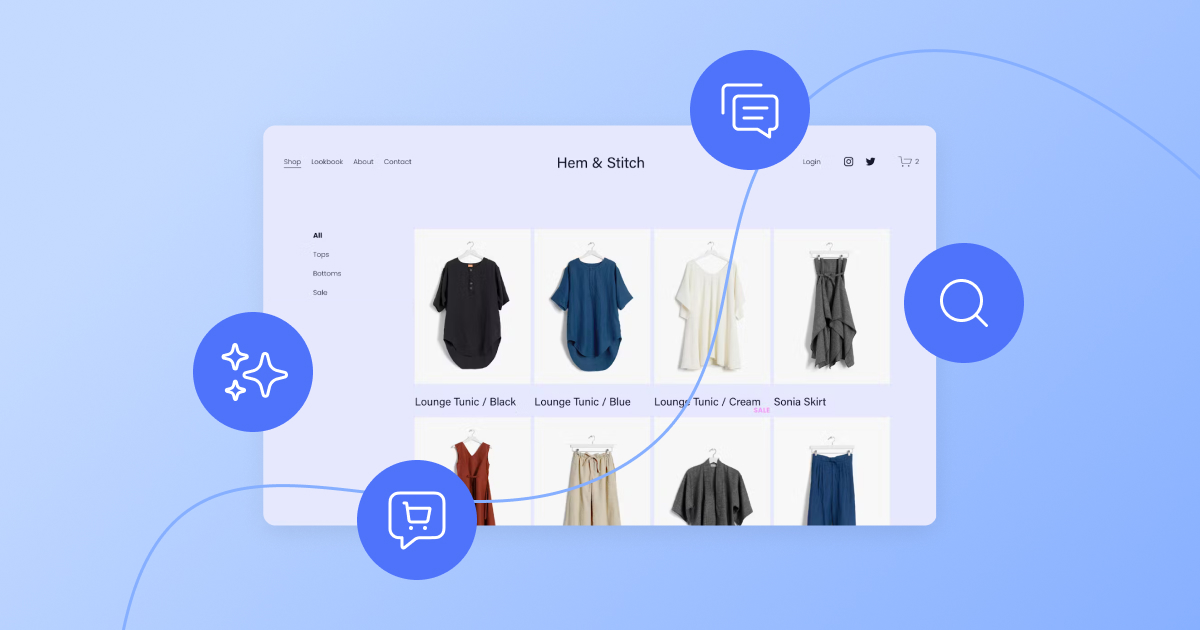This article was written by Samidha Visai, former Product Manager at Secureframe and current Product Manager at Affirm.
As success stories of tech companies and their industry-disrupting solutions flood our newsfeeds, the concept of “product-led growth” can be seen everywhere. And, while the concept of product-led growth seems self-explanatory, there is more to the strategy and benefits of product-led growth that are crucial for product teams – and all teams – to understand.
In this post, we’ll define what product-led growth is, investigate its evolution, and illustrate its benefits with real-life case studies. Lastly, we’ll explore why customer experience surveys are essential when developing your own user-focused product strategy.
What is product-led growth?
Product-led growth (often abbreviated to “PLG”) is a go-to-market strategy that centers the complete product experience as the primary driver of end-user growth throughout all stages of the customer lifecycle.
As opposed to the traditional go-to-market strategy in the B2B sector that relies on high-touch customer engagements and costly advertising campaigns, this strategy heavily depends on the product to sell itself. Therefore, product development teams have an increased responsibility to deliver a product capable of matching that expectation.
Other teams like sales, marketing, and customer success, must also align on the same product-led growth strategies that will ultimately attract and benefit the customer.
Is product-led growth a new concept?
While the terminology and discussion of product-led growth might seem new, the concepts have certainly been around as long as businesses have been selling products.
To put it concisely, product-led growth is about building a product that is easy to use, return to, and share.
Think about your favorite product – likely, it was seamless to start using, enjoyable and useful to keep using, and added enough positive value that you wanted to talk about it with your friends. This is a product, even if not created by a 21st century B2B software company, that likely has aspects of product-led growth working in its favor.
A shift in B2B software companies
Within B2B software companies, there has been a recent shift to product-led growth – namely, the consumerization of enterprise software.
Historically, enterprise software was sold in bulk to businesses. Meaning, the end-users within those businesses, employees and personnel, did not have much flexibility in regards to which software they wanted to use in the workplace. That dynamic led to the stereotypes we associate with enterprise software: old, clunky, frustrating, (yet expensive), and difficult to switch from.
As software continues to consume the world and it becomes easier and more accessible than ever to build something new, B2B software is emerging at much cheaper (and even free) prices.
Now, employees can often pick and choose many of the tools they want to use at work without the barriers to entry that existed prior. Savvy users bring the products they discover and love to the workplace and evangelize their adoption to their peers.
There is a bottom-up approach to product adoption within the office, and as with any product, end-users often do have the best insight into which products actually work and are most helpful. Employees will even help drive growth by sharing their favorite tools with their external partners and customers to make areas of shared collaboration more efficient – like tools to improve customer support interactions and new ways to attend meetings cross-functionally.
While many consumer sector businesses never left product-led growth too far behind, enterprise companies will have to put the end-user front and center to survive and thrive in the new age of consumer-led growth.
Gone are the days of ignoring the end-user within B2B product development and being able to keep the edge on your competitors through sales and marketing tactics alone.
What are the benefits of product-led growth?
The good news is that product-led growth is not just a one-way strategy of appeasing your end-users. The strategy invites a natural feedback loop that drives exponential growth for your business while granting more ease, focus, and alignment to your internal strategy.
Let’s walk through a few of the benefits your business can experience by implementing product-led growth:
Scale faster
Companies who have not yet implemented a product-led growth strategy (and are years into their business) can certainly “move slow to move fast” with a product-led strategy that results in major payoffs at scale.
However, it may take some front-loaded effort to revisit your product roadmap to prioritize product-led growth. For example, you will need to engage in customer and product discovery to uncover feature gaps, consider what new features should be enabled to address those gaps, and retrain your teams on a new customer-facing strategy.
Nevertheless, that front-loaded work pays off as product-led growth companies typically outperform other companies in ARR (Annual Recurring Revenue).
That’s because the feedback loop mentioned above – learning what works and what doesn’t about your product directly from end-users – creates viral growth and allows your users to sell your product for you once it’s optimized for them.
Reduce costs
The alternative to product-led growth is to continue to scale by hiring more personnel. This is the classic path that most enterprise companies employ.
In the short run, this tactic may seem like a very tempting and easy fix to growth. However, in the long run, the strategy of “hiring more” has time and again resulted in slowing down growth and increasing costs with lower margins per customer.
Product-led growth strategies may seem like more upfront effort, but these strategies allow your business to scale without your internal costs needing to scale at the same rate.
Align teams
It is important to emphasize that product-led growth is not about the product manager being centered in the company. Rather, the focus should be on the entire company (including the product manager) coming together to center on the end-users.
In traditional enterprise businesses, cross-functional teams often work in silos, leading to disjointed strategy-building across teams like product and sales.
Product-led growth requires open collaboration, across all teams. Combining ideas across the business can result in new strategies to drive end-user growth through product design, usability, etc. This type of collaborative experience results in better idea alignment and therefore, better results.
Product-led growth case studies
With the emerging importance of product-led growth strategies for enterprise businesses, it’s no wonder that some of the top startups are excellent case studies in product-led growth.
Calendly
Calendly is a product-led growth company with a strong viral loop. Their product addresses a very real pain point within the day-to-day of most corporate offices of scheduling meetings, especially with external parties.
Calendly has focused on product-led growth by building several key features to promote its virality and adoption – such as using custom links as invitations that naturally invite others to the product.
Slack
Slack is one of the biggest product-led driven companies on the market today, with a market cap of $23 billion when they IPO’d in 2019.
The Slack team has been centered on product-led growth features and strategy from the very beginning. They worked to create a product that has a seamless self-service experience for all new users, that allows cross-collaboration to promote to new users, and that focuses on end-user satisfaction and happiness.
Zoom
Zoom has emerged as one of the most recognizable companies in the world over the last few years. The phrase “Let’s hop on a Zoom” is almost ubiquitous in today’s remote world.
CEO Eric Yuan had years of experience in traditional enterprise products and wanted to build a product-led company to revolutionize one of the most used but least user-friendly services within the business, web conferencing.
Of course, as we know today, Zoom was incredibly successful with this approach and IPO’d with a market cap of almost $16 billion in 2019.
A product-led growth tool: Customer experience surveys
When beginning a product-led growth strategy, you will need to bring the end-user into your product development lifecycle if they are not already there.
Oftentimes in enterprise businesses, product teams can be reactionary to product updates or changes based on what businesses, sales, and new customers are requesting. As such, the end-user and their opinion on the product can get lost in the conversation.
Customer interviews and surveys can be a key tool in a product manager’s toolbox when it comes to product-led growth. When you collect and report on end-user feedback across the product lifecycle, you have real-time access to what your users need and want from your product.
Then, it’s a great opportunity to strategize, prioritize, learn, and iterate across the business (such as with design and user research teams) as you build and scale your product from direct end-user insights.
Additional product-led growth resources
For additional resources, check out these articles and links on how to optimize your product-led growth strategies and tips for creating product surveys for actionable feedback:
- A CEO’s guide to product-led growth: 5 best practices for growing your business
- How to measure and track product/market fit
- Create product/market fit surveys
- 10 best product survey questions for product managers to gather customer feedback
About Samidha Visai
Samidha Visai was at KPCB-backed security startup Secureframe as the first product manager hire. Her career started in software engineering, with experience at Microsoft and Lyft, and led her to entrepreneurship where she launched a clothing rental startup. Samidha is also a Product Gym senior member and mentor.
Samidha is passionate about bringing together diverse ideas and stakeholders along with strong empathy to build the best products possible. She currently lives and works in San Francisco and spends her free time diving deep into the practices of yoga and meditation.







